iFi iEMatch 2.5 – Balanced Matching
iFi iEMatch 2.5 is the version of iEMatch made for 2.5mm balanced connectors. Those iEMatch units have been known to help those with hissy sources get a better sound without needing to upgrade the whole source, and iEMatch is usually pretty affordable as well. We’ll place this one through its paces and see what the buzz is all about.
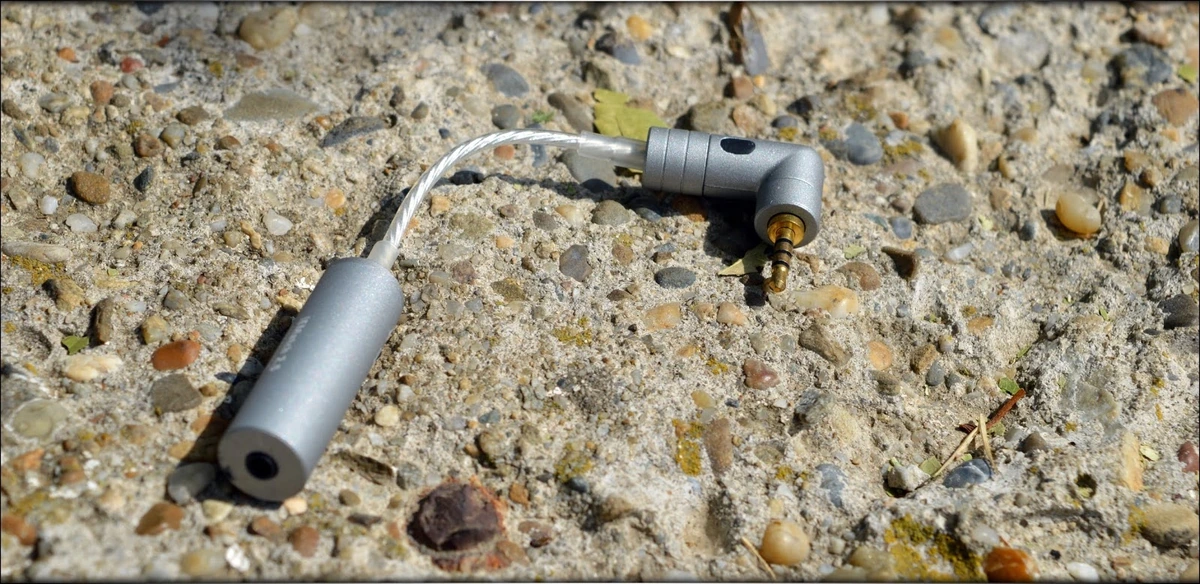
Introduction
iFi is a very well-known company in Audio and especially in the Audiophile Hobby, since they are some of the most exemplary when it comes to their service, support as well as involvement with the community. iFi products are a dream to own, and we have a few already, from their iFi iDSD Black Label Micro, to the Nano, and soon to come is the iFi xDSD, another awesome product. We’re not affiliated with iFi, but we like their work so far, pretty good and most important, usually really well priced compared to the competition.
It should be noted that I have absolutely no affiliation with iFi, I am not receiving any incentive for this review or to sweeten things out. This review is not sponsored nor has been paid for by iFi or anyone else. I’d like to thank iFi for providing the sample for the review. The sample was provided along with iFi’s request for an honest and unbiased review. This review will be as objective as it is humanly possible, and it reflects my personal experience with iFi iEMatch 2.5. Every opinion expressed is mine and I stand by it, the purpose of this review is to help those interested in iFi iEMatch 2.5 find their next music companion.
Product Link
You can purchase your own iEMatch from www.amazon.com here: https://www.amazon.com/iFi-iEMatch-Headphone-Optimizier-3-5mm/dp/B01L4CPF7U
Packaging
First things first, let’s get the packaging out of the way:
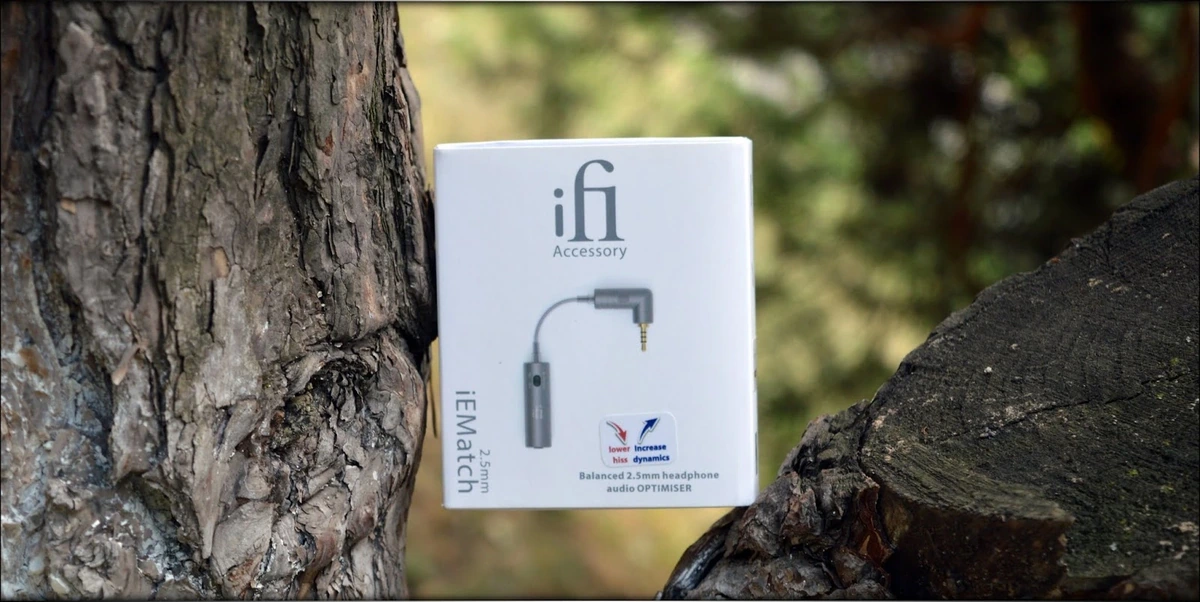
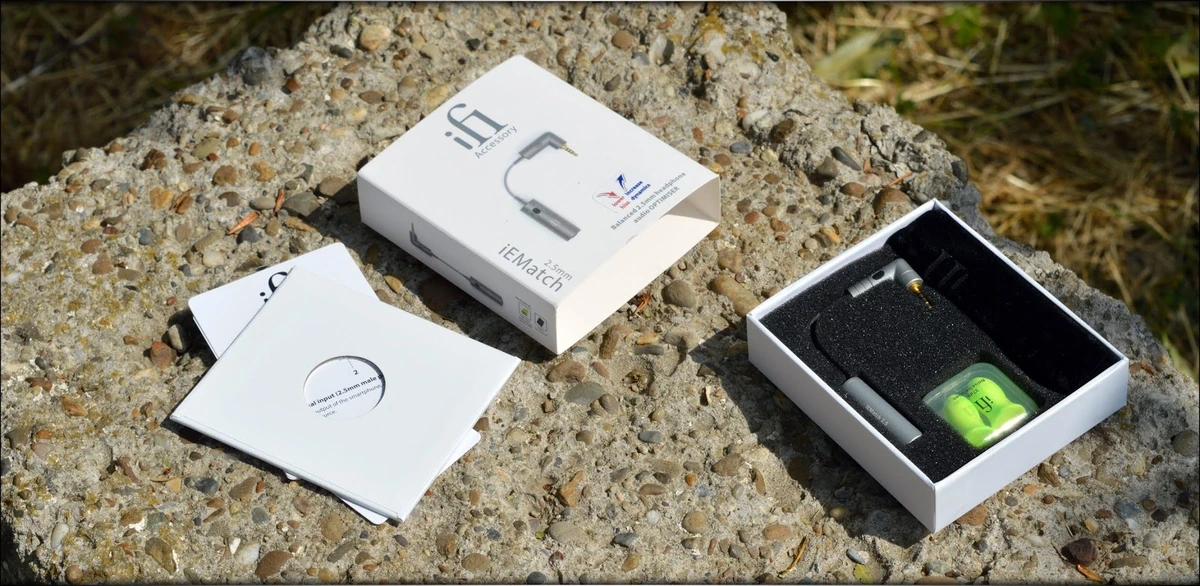
For most of their products, iFi used pretty fancy packages, but now the package is rather small. Of course iFi iEMatch 2.5 doesn’t have a lot it comes with since it is an inexpensive adapter that helps with hissy and noisy sources, so we aren’t bothered by the lack of a larger package.
In fact, we’re pretty happy that iFi included all that was necessary in the package, and a little extra.
With iEMatch 2.5 you get the unit, two foam plugs, and a little carrying pouch.
It is unclear why the foam plugs are included, but they are a welcome addition anyways, especially for that time you go to a concert and happen to need something to protect your hearing from the loud music.
All things considered, we are rather happy with the package, it feels fitting for the product.
Technical Specifications
Input Impedance: 16 Ohm
Output Impedance: < 2.5 Ohms (High-Sensitivity) < 1.0 Ohms (Ultra-Sensitivity)
Weight : 12.2g
Total Length : 116mm
Warranty period: 12 months
Build Quality/Aesthetics
iFi iEMatch 2.5mm is basically a little cable adapter which is used to control the output impedance and noise of your source. It works by filtering the signal of your source and lowering the noise floor, along with the volume of it. It usually results in a lower output volume as well.
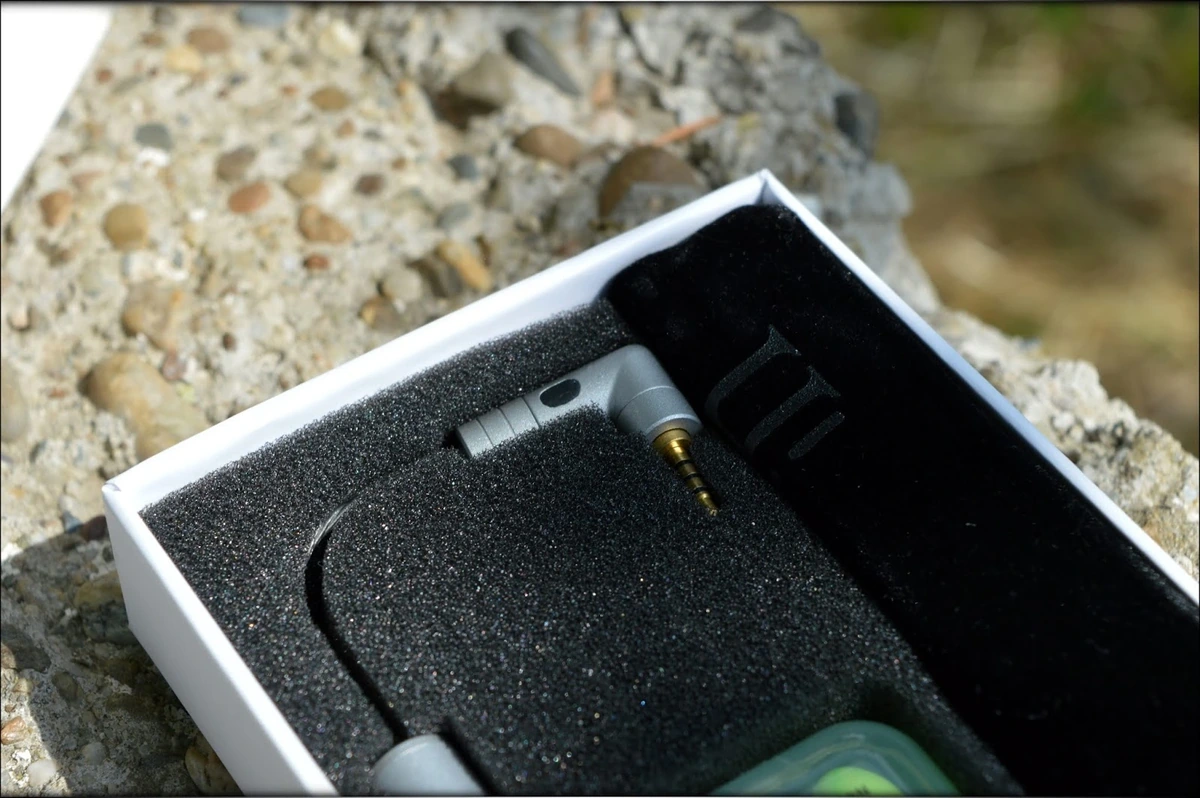
The Aesthetics make it look like a sturdy adapter of sorts, it doesn’t give off much about its purpose by the looks alone, being neither a cool-looking device nor something that will change the overall look of your setup too much. At most, it looks like a USB DAC like those used in Type-C based smartphones, so most people can either think it is part of the natural listening setup, or a jack adapter.
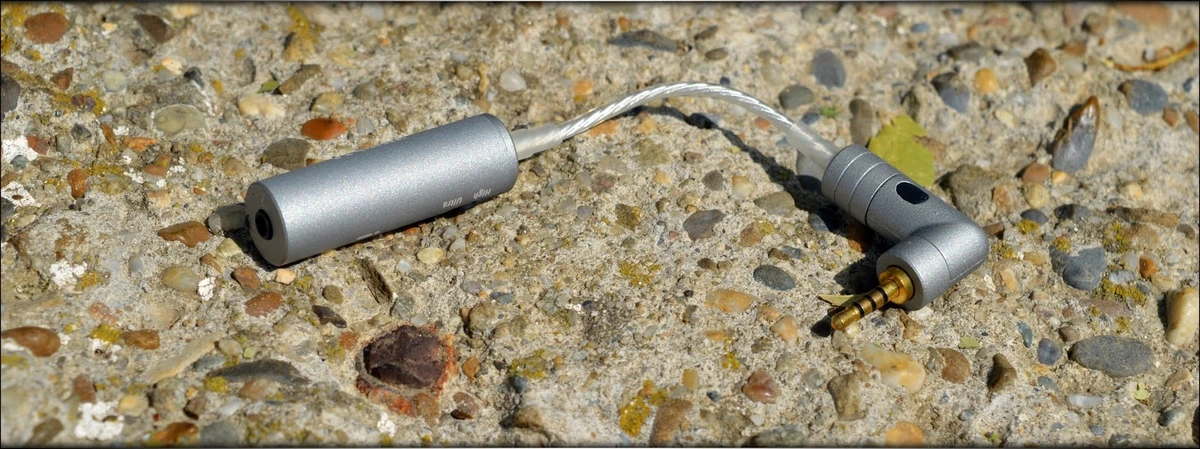
This is actually good, because its purpose is quite complicated, and while it can surely make a good discussion subject with someone who is really into audio, it can be slightly complicated to understand for a more casual listener / user.
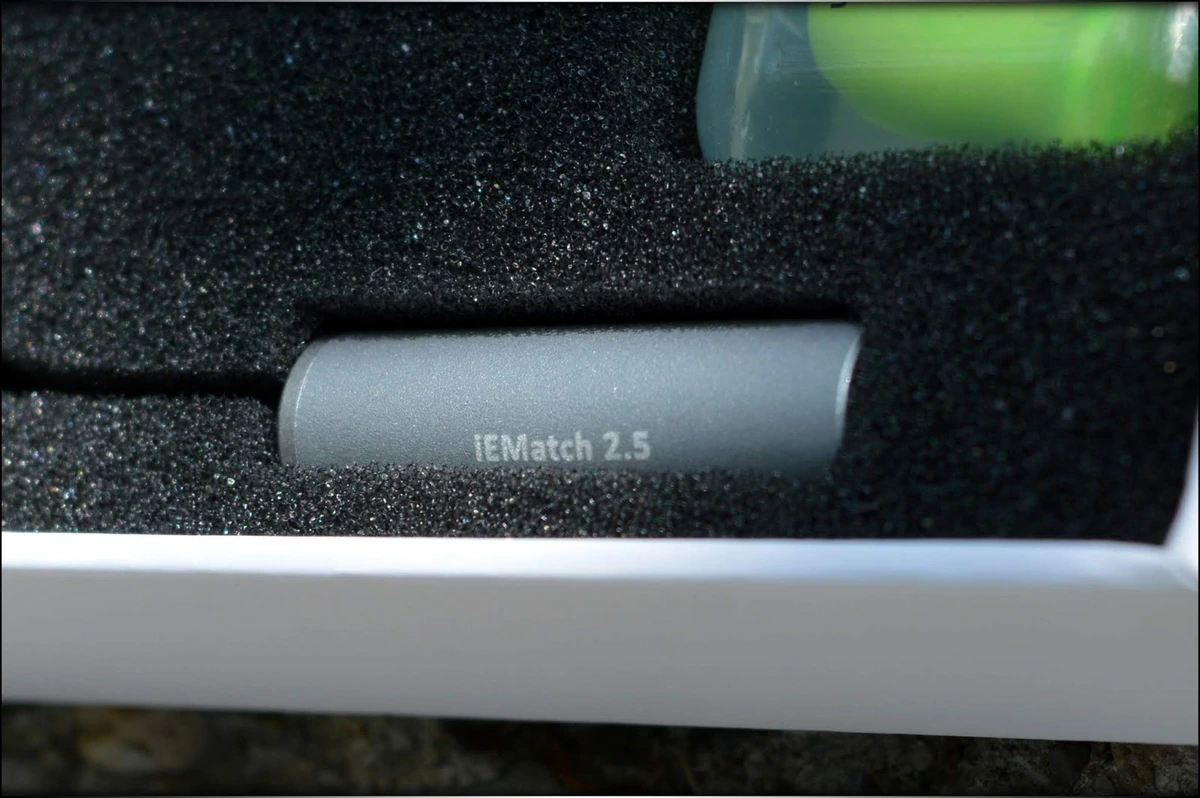
The Build Quality is excellent, the plug and cable are both sturdy and feel trustworthy, the button for setting the iEMatch to High or Ultra feels good and overall, the device is built very well.
iEMatch has two modes, one being high and one being ultra, depending on how much it affects the impedance, the Ultra setting being the one that has more effect than the High one.
Sound Quality
We don’t have any other device to run the typical comparison and running the pairing tabs isn’t very worthwhile when iEMatch does the same thing for almost all sources. The basic rule of thumb is that if you feel your source is noisy, then iEMatch is sent from Heaven.
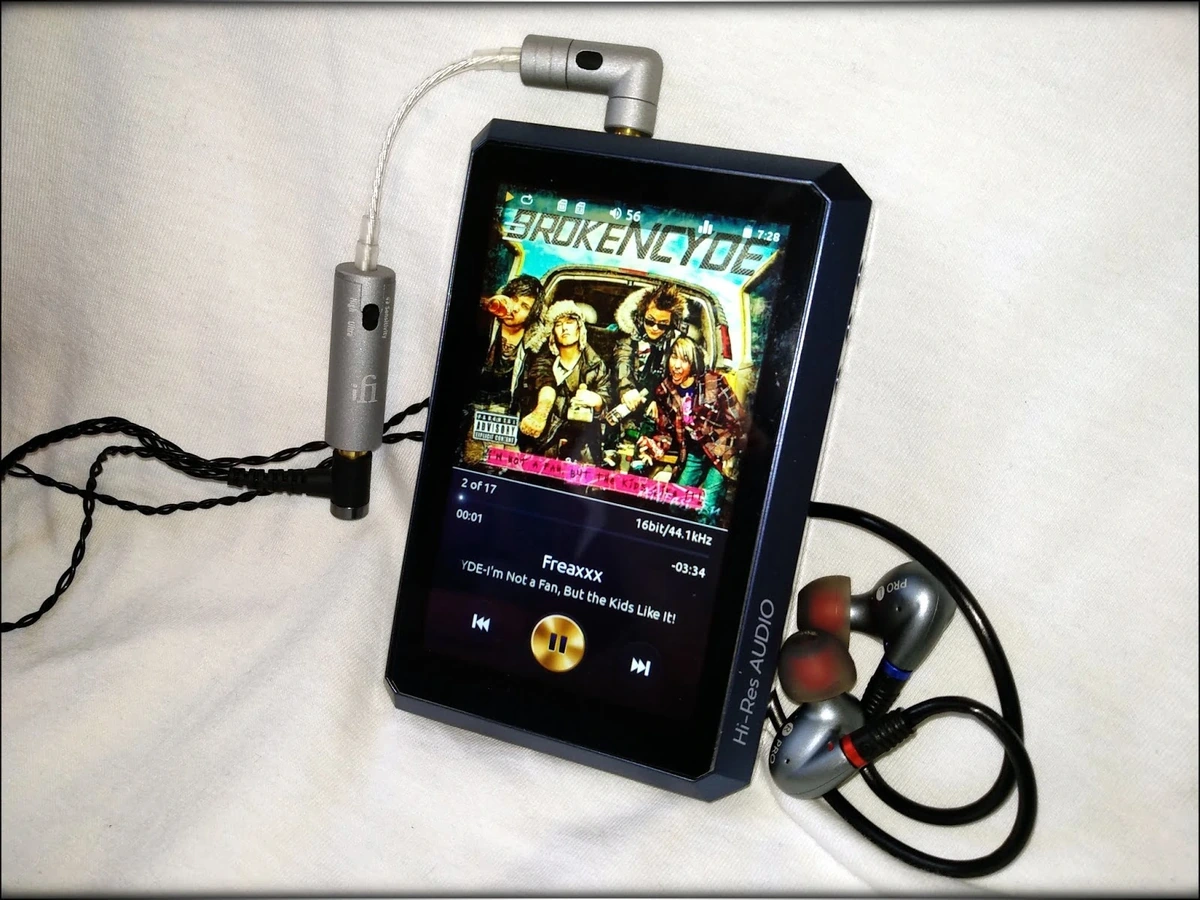
Most 2.5mm Balanced outputs have a little bit of added power compared to their Single Ended counter parts. This means that for most people the Balanced output can sound a bit more dynamic, a little brighter, and sometimes even hissier, as for some DAPs the balanced output has a higher output impedance, resulting in a few impedance differences, leading to hiss with very sensitive IEMs.
Many users claim a difference in the sonic performance of their equipment when running it on Balanced, differences usually being a more controlled sound, quicker sound, better overall ADSR/PRaT (Textures), more Dynamics and a more enjoyable overall experience. We never reviewed Balanced vs Single Ended because a bias-free test is impossible, since we can’t hot swap between two devices, and since Balanced Cables are usually made with a more strict quality control, along with a different overall cable composition. This means that for the most part the Balanced version of a IEM or Headphone might sound better, but a lot of variables change along the way, being hard to tell what exactly makes them sound better.
With the recent increase in Balanced devices appeared some which have a little too much power, an output impedance that is a little too high, or those which are a little hissy / noisy by default.
This is where iEMatch comes in handy, its role is to silence the noise from the source. What it does, it basically adds impedance to the source, which although doesn’t sound like it would do a lot, it actually silences the sound, makes everything quieter, including the noise.
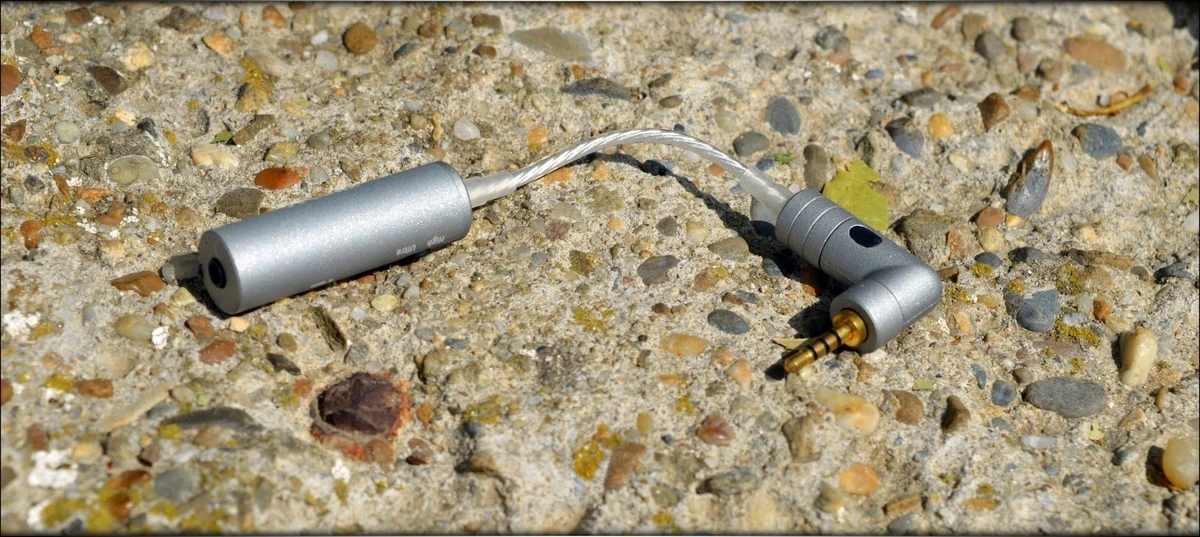
Now, there are a few aspects to this that we should discuss.
This lowers the hiss from sources, leading to a hiss-free experience, that works with IEMs which are very sensitive to hiss, like those IEMs with only a few OHMs of impedance for themselves.
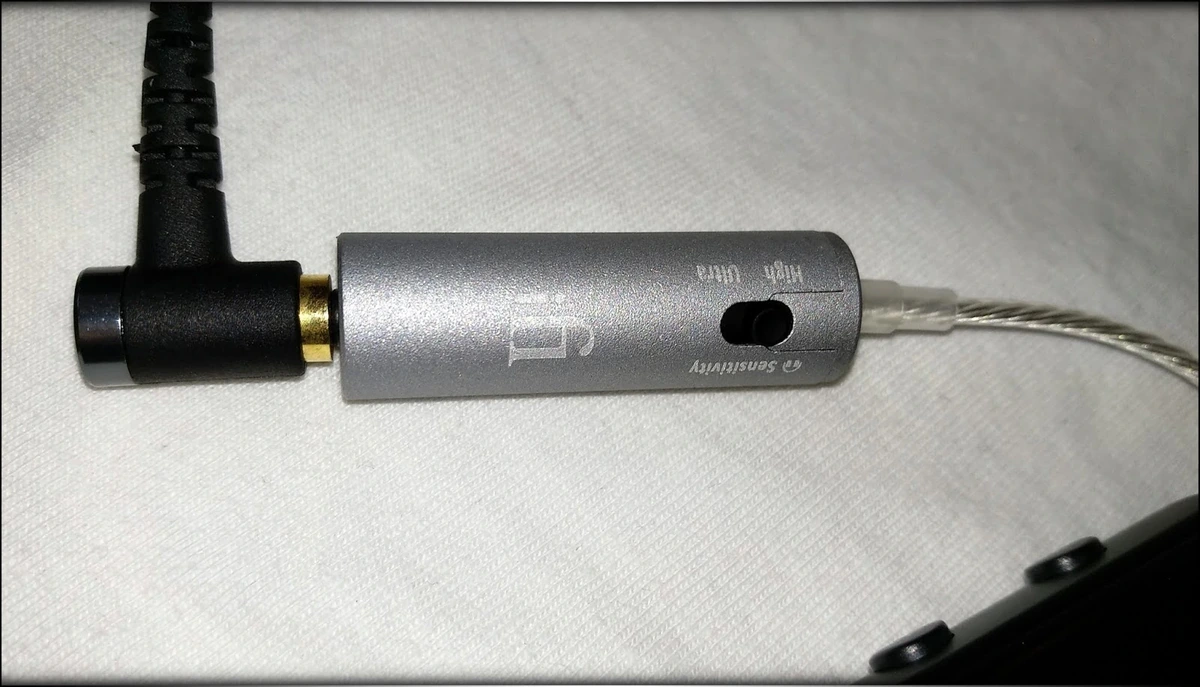
iEMatch also states that it can increase the dynamics of a combo, and there might be some truth to this, especially for IEMs (In-Ear Monitors), where those would need really low amounts of power. This means that the amplifier used in the pairing might be operating at a really low voltage / power, which can result in certain designs in a loss of dynamics. By adding impedance, and increasing the volume, there is a chance of also increasing the dynamics of sound, since some designs operate better at high loads. This is very design dependent though, and hard to predict unless experimented with.
The other thing iEMatch can do is lower the noise floor by filtering noise. Some users reported that they hear a black background and more focus on certain background instruments which would otherwise be drowned by the background noise.

In all fairness, we tested iEMatch 2.5 extensively, but we are usually not very prone to notice noise nor hissing, but we did notice a darker overall background with iEMatch 2.5, along with a better overall sound, although it required us to increase the volume considerably more than if not using it, the results being sometimes the amplifier working at higher loads than it would normally do.
All in all, it is as it should be, colorless, it is supposed to be transparent and not change the signature much, and it does what it states it should do, lower the hiss and adding resistance to the IEM, so the improvements will be variable, from IEM to IEM. We’re looking at something that is not supposed to have a Sound Signature, just to improve and silence noise, and this is something it does.
In our experiments, the dynamics were not necessarily consistently better for all setups, some setups did indeed benefit from adding iEMatch 2.5, while others did not, with the results themselves being rather small. In the end we can’t guarantee the results on dynamics.
The background is blacker, there is a silence going on in the background, especially if the source was noisy, and even if it was only slightly noisy.
We would like to remind you that this device is colorless, it doesn’t really change the signature itself, only a few aspects of the sonic performance of a device. Its biggest role is to change the output impedance to a lower one after all.
Portable Usage
The portable performance is good. Being rather small and flexible, it doesn’t really add to the bulk of a listening setup, and it doesn’t really change it either. On this note, we usually talk about listening volume and noise isolation, so we feel it is fair to run iEMatch 2.5 through those two as well.
On listening volume, adding iEMatch means that you will require more volume.
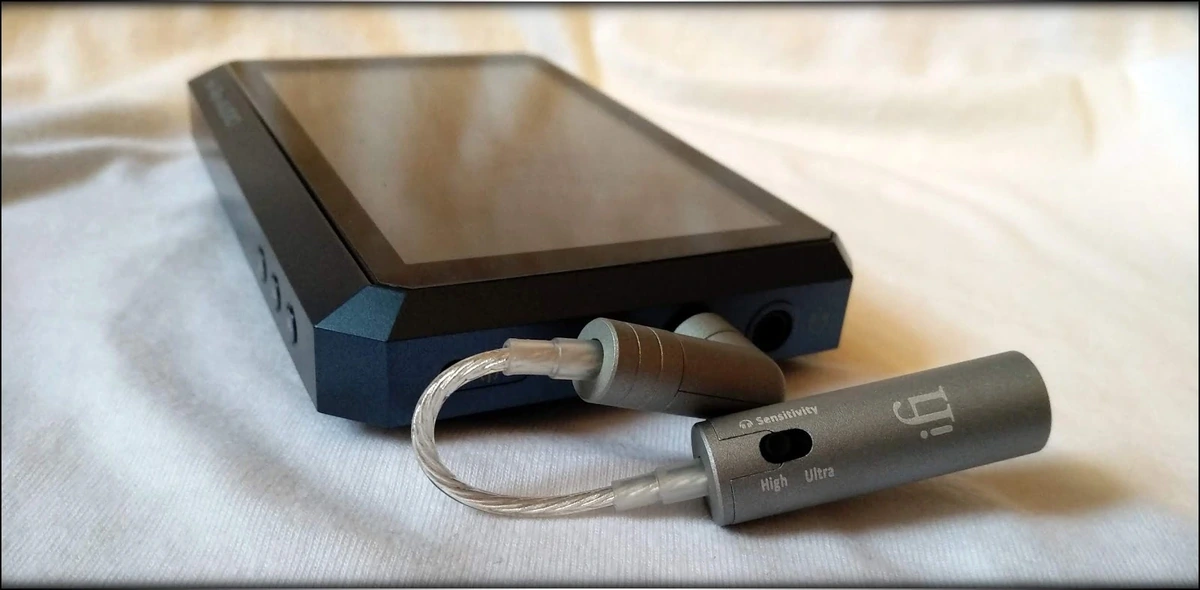
Although most 2.5mm Balanced source have no problem in driving hard-to-drive loads, if yours was already reaching the maximum volume when driving something, then adding iEMatch is not a great idea, as it will make everything quieter. This means that you might be unable to drive your IEMs / Headphones properly loudness-wise, but then again, this should be extremely rare, and for most IEMs or headphones that would be like this, you’re probably not going to need iEMatch since its design is mostly intended for those which are very sensitive and would pick up hiss and background noise.
On the noise isolation, it is fair to state that iEMatch does nothing to it, but the fact that you have a blacker background means that you might require less isolation on an overall level, because background notes are easier to distinguish. This effect might also lead to lower overall listening volumes, even while on-the-go and while in public, since you’d be hearing more in the background, with less volume, so this can be a good part of using iEMatch 2.5, although we feel that this will depend a lot on the user.
All in all, the shape, size and build quality make iEMatch very portable and a good addition to your portable listening setup. It can sit nicely with any DAP, from Hiby R6 to Opus #1s, FiiO X5-3, FiiO X7mkii, FiiO Q5, and so on. There’s literally no real bulk added to most audiophile setups, so on portability, it is really good.
Value and Conclusion
First, we have the price, which is around 60 – 70 USD. This isn’t exactly low, considering what it is, but it isn’t exactly high either. iEMatch 2.5 is also going to be usable with any DAP you upgrade to, and with all your IEMs, as long as they are based on 2.5mm connectors, so unless you plan on switching to 4.4mm balanced connectors, or unless you plan on going to unbalanced, you’re going to have usage for it for a long time, so the money can be considered a good investition. Since most DAPs that have a balanced connection start from 300 USD and go up, and since most multi-BA IEMs that are quite sensitive are also quite pricey, iEMatch is not a very expensive addition to your listening setup, and in most cases can be considered affordable, relative to the rest of the listening setup.
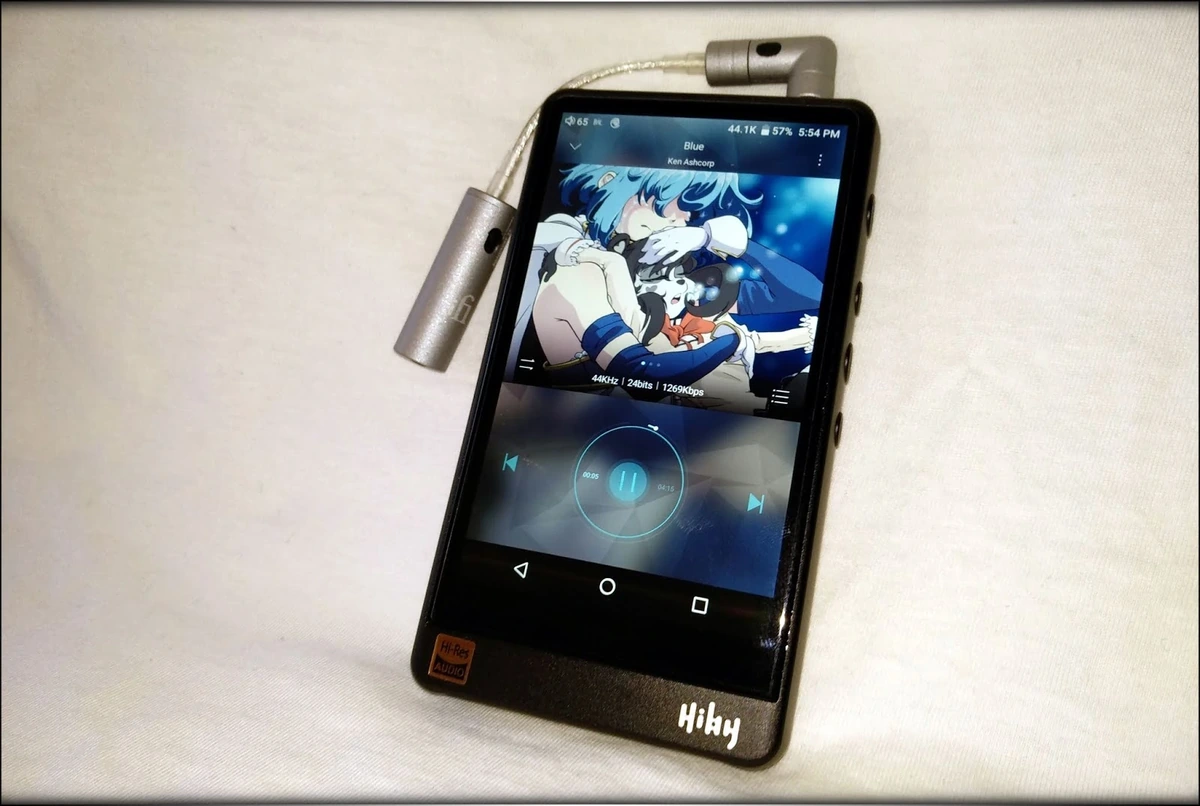
When it comes to its build quality, it is extremely well made, its simplicity playing a role on this, and we didn’t have any issues with it. In fact, this is important because it will stay in a stack with a device, and it should be pretty solid. It doesn’t have much weight, and it doesn’t pull on the jack of the device it is connected to, and it doesn’t have any part that can break.
Its main role, the lower the output impedance of a device, is achieved fairly well, and it doesn’t colour the sound. It will redeem a device if its Balanced output is a bit hissy or a bit noisy, and it can redeem a device even if its balanced output is very hissy or very noisy. The main issue here is that there are few devices that have balanced outputs, and even fewer that are really noisy, but as more and more devices come to the market, some will aim to drive very hard-to-drive headphones from that balanced output, and this will sometime mean that a sacrifice has to be made, and that device might not be ideal for driving in-ears. Here, iEMatch 2.5 will be a great addition to your listening setup and help you enjoy the sources and the IEMs you already own more.
In conclusion, iEMatch 2.5mm is a great addition to your listening setup if you use IEMs a lot, especially multi-BA IEMs and IEMs that are very sensitive (have a very low impedance, or very high efficiency), as those will take advantage the most from the works of iEMatch 2.5mm. With a good build quality, and a nice design, iEMatch 2.5 is going to be a great aid if you want less hiss and less background noise, and it comes at a price that’s not very high either, so you can safely add it to your listening setup.
Product Link
You can purchase your own iEMatch from www.amazon.com here: https://www.amazon.com/iFi-iEMatch-Headphone-Optimizier-3-5mm/dp/B01L4CPF7U
--- Please remember to stay safe, and always have fun while listening to music!---
- If you have a dime to spare, please donate, and help us! It would make the day brighter for me and my wife-
Full Playlist used for this review
We listened to more songs than those named in this playlist, but those are excellent for identifying a sonic signature. I recommend trying most of the songs from this playlist, especially if you’re searching for new music! The playlists are different for Spotify, Tidal and Youtube, and based on the songs I enjoy and are available on each!
https://www.youtube.com/playlist?list=PL_cjBXGmwSHSdGcwuc_bKbBDGHL4QvYBu
https://open.spotify.com/playlist/5J3oloz8Riy9LxEGenOjQ0?si=979ba4f082414be7
https://tidal.com/browse/playlist/330fd544-8e5b-4839-bd35-676b2edbb3d5
--- Contact Us ---





